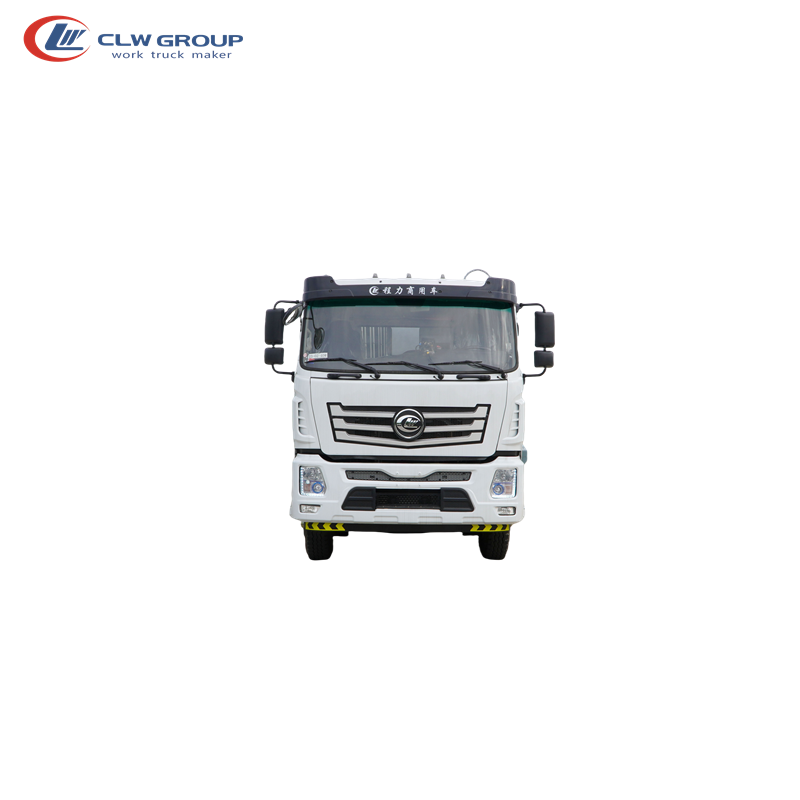Introduction:
In today's fast-paced world, efficiency and productivity are the key drivers of success for businesses in various industries. For companies that rely on work trucks to transport goods, deliver services, or carry out operations, having an effective navigation system is crucial. Work truck navigation systems have come a long way from traditional paper maps and basic GPS devices to sophisticated technologies that offer real-time tracking, route optimization, and advanced safety features. In this article, we will explore the evolution of work truck navigation systems, their benefits for businesses, and the latest trends shaping the future of this essential tool.
Evolution of Work Truck Navigation Systems:
The evolution of work truck navigation systems can be traced back to the early days of GPS technology. Initially, work trucks relied on standalone GPS devices that provided basic navigation assistance, such as turn-by-turn directions and estimated arrival times. These early systems were a significant improvement over paper maps, offering greater convenience and accuracy for drivers.
As technology advanced, work truck navigation systems began incorporating more features to enhance efficiency and safety. Integrated GPS units became standard in modern work trucks, allowing for seamless communication between drivers and dispatchers. Real-time tracking capabilities enabled businesses to monitor the location of their vehicles and optimize routes for faster delivery times.
One of the key advancements in work truck navigation systems is the integration of telematics technology. Telematics combines GPS tracking with data collection and analysis to provide valuable insights into vehicle performance, driver behavior, and fuel efficiency. By leveraging telematics data, businesses can identify areas for improvement, reduce operating costs, and enhance overall fleet management.
Benefits of Work Truck Navigation Systems:
Work truck navigation systems offer a wide range of benefits for businesses operating fleets of vehicles. Some of the key advantages include:
1. Improved Efficiency: By providing drivers with accurate navigation instructions and real-time traffic updates, work truck navigation systems help optimize routes and minimize delays. This leads to faster delivery times, increased productivity, and higher customer satisfaction.
2. Enhanced Safety: Advanced navigation systems come equipped with safety features such as lane departure warnings, forward collision alerts, and fatigue monitoring. These features help prevent accidents, reduce risks on the road, and ensure the well-being of drivers and cargo.
3. Cost Savings: Work truck navigation systems can help businesses save money by optimizing fuel consumption, reducing vehicle wear and tear, and minimizing idle time. By streamlining operations and improving efficiency, companies can achieve significant cost savings in the long run.
4. Better Fleet Management: Work truck navigation systems provide fleet managers with valuable data on vehicle location, driver behavior, and performance metrics. This information can be used to track fleet performance, identify areas for improvement, and make informed decisions to enhance overall fleet management.
5. Customer Satisfaction: With accurate and timely deliveries, businesses can enhance customer satisfaction and build loyalty. Work truck navigation systems play a crucial role in ensuring that goods are delivered on time and in good condition, leading to positive customer experiences.
Latest Trends in Work Truck Navigation Systems:
The rapid pace of technological innovation continues to drive advancements in work truck navigation systems. Some of the latest trends shaping the future of this essential tool include:
1. Integration with Artificial Intelligence (AI): AI-powered navigation systems are becoming increasingly common in work trucks, offering intelligent route planning, predictive analytics, and personalized recommendations. By analyzing vast amounts of data in real time, AI can help optimize routes, improve efficiency, and adapt to changing road conditions.

2. Enhanced Connectivity: Work truck navigation systems are evolving to offer seamless connectivity with other devices and platforms, such as smartphones, tablets, and cloud-based services. This integration allows for better communication between drivers and dispatchers, real-time updates on traffic and weather conditions, and remote monitoring of vehicle performance.
3. Augmented Reality (AR) Navigation: AR technology is being integrated into work truck navigation systems to provide drivers with visual guidance and real-time information overlaid on the road ahead. AR navigation enhances situational awareness, reduces driver distractions, and improves overall safety on the road.
4. refrigerator truck -Friendly Features: In response to growing environmental concerns, work truck navigation systems are incorporating eco-friendly features such as route optimization for fuel efficiency, electric vehicle charging station locations, and emission monitoring. These sustainability-focused capabilities help businesses reduce their carbon footprint and comply with regulations.
5. Autonomous Driving Capabilities: The rise of autonomous vehicles is driving the integration of self-driving technology into work truck navigation systems. While fully autonomous trucks are still in the testing phase, navigation systems are being equipped with semi-autonomous features such as adaptive cruise control, lane-keeping assistance, and automated parking to enhance driver safety and efficiency.
Conclusion:
Work truck navigation systems have evolved significantly over the years, offering businesses in various industries a powerful tool to enhance efficiency, safety, and productivity. From basic GPS devices to sophisticated telematics solutions, these systems continue to adapt to the changing needs of the modern workforce. The latest trends in work truck navigation systems, such as AI integration, enhanced connectivity, AR navigation, eco-friendly features, and autonomous driving capabilities, are shaping the future of this essential tool and paving the way for a more efficient and sustainable transportation industry. By embracing these advancements and leveraging the benefits of work truck navigation systems, businesses can stay ahead of the competition, streamline operations, and drive success in the digital age.
